NVIDIA Tegra Note 7 Review
by Brian Klug on November 12, 2013 9:01 AM EST- Posted in
- Tablets
- Mobile
- Tegra 4
- NVIDIA
- Tegra Note
Performance
Obviously the highlight from NVIDIA’s perspective is the Tegra 4 SoC inside Tegra Tab, which in this case is clocked at a maximum single-core CPU frequency of 1.8 GHz. This is just short of the 1.9 GHz max single CPU clock in Shield. Of course Tegra Tab lacks the benefit of the active cooling system Shield has and has an accordingly lower TDP.
After reviewing and investigating Shield I discovered a bit more about the different tiers or bins of Tegra 4 SoCs available to OEMs, which are binned into a few SKUs and capped with different maximum currents. I did a bit of digging, and the SoC inside Tegra Tab is T40S (as opposed to the T40X inside Shield, although the real name is T114).
The specific breakdown is that the SoC is a SKU 5 part, and has the 6 A current cap in place, or 8 watts. In addition to the CPU clock frequency differences I touched on, the GPU inside also sees its clocks go down a bit from the 672 MHz in Shield, to 600 MHz inside Tegra Tab, for a roughly 12 percent theoretical performance difference in GPU compute power.
We covered most of the performance breakdown with Tegra 4 in the NVIDIA Shield review, and at this point Tegra 4 is pretty well understood. That said I still ran the tablet through our usual set of tablet benchmarks to see how the device fares given the theoretical performance offset from Shield.
CPU Performance
We start with our CPU related benchmarks which consist of a mix of JS benchmarks and a few others.
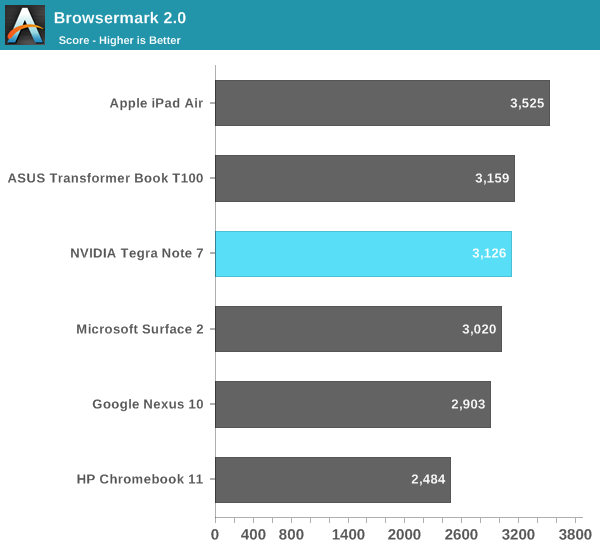
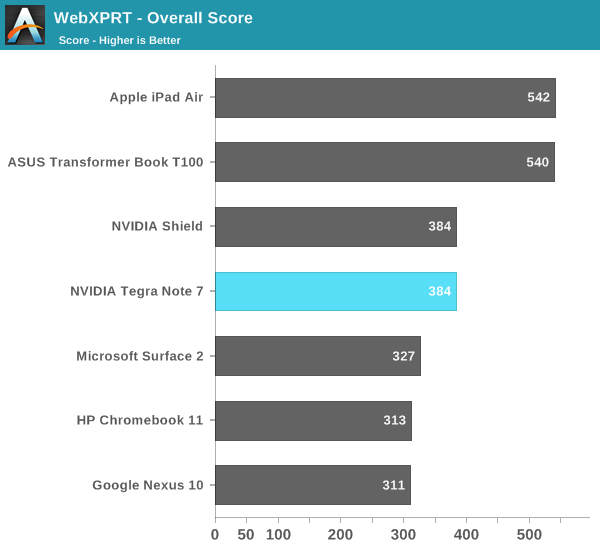
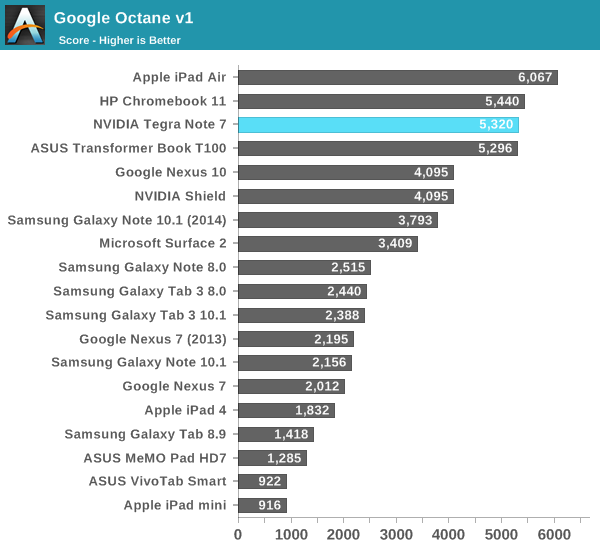
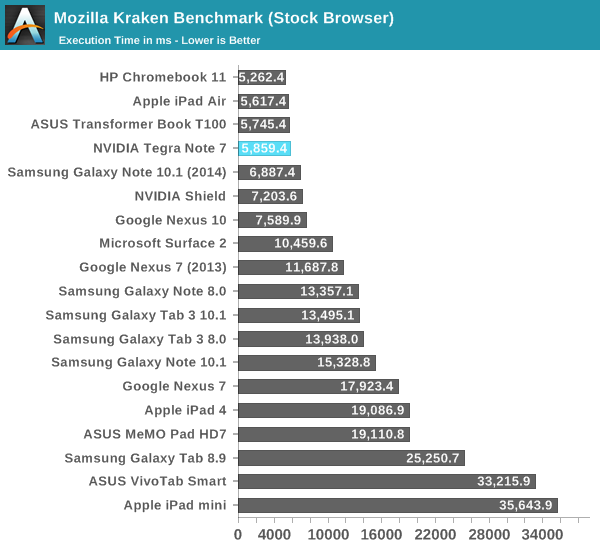
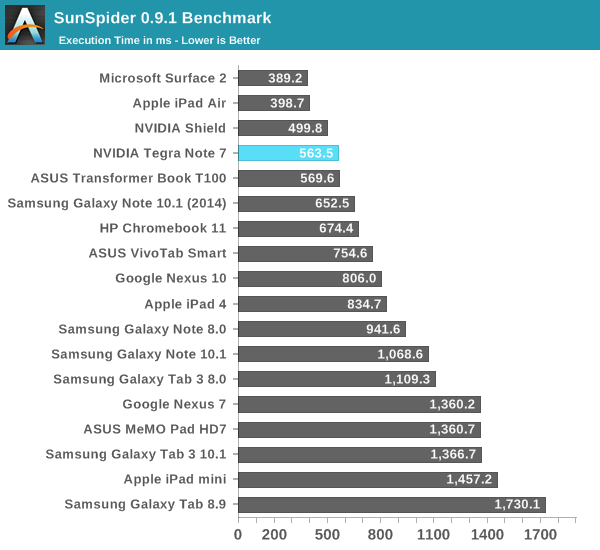
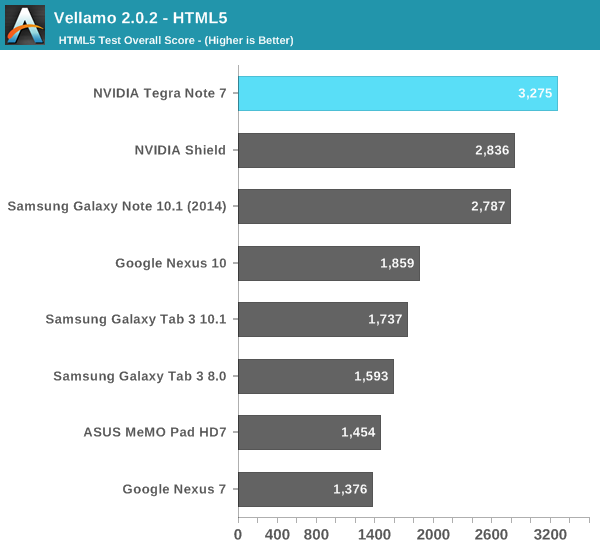
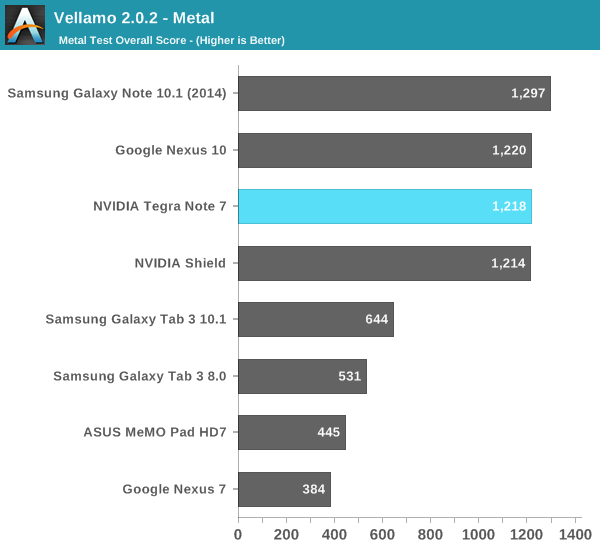
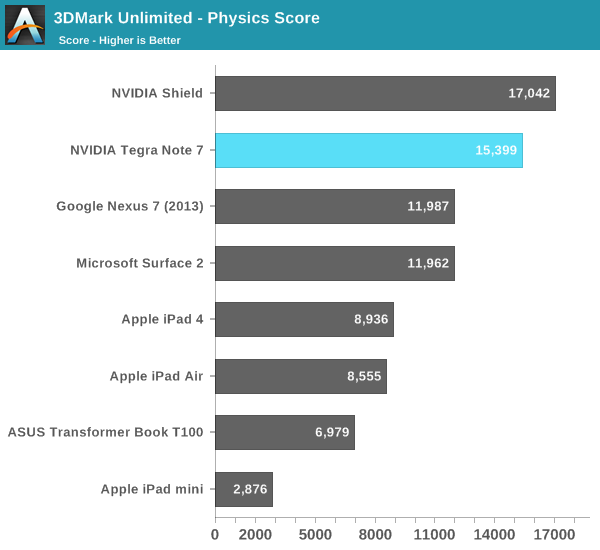
I only included sunspider 0.9.1 since oddly enough the Tegra Note gives not a number (NAN) results for a few subtests when running sunspider 1.0 both in Chrome and the stock browser. I recollect seeing this intermittently on a few devices in the past, but couldn’t get a score to generate despite repeated runs and reboots. The rest of the web benchmarks actually have crept up since we looked at Shield, which is my comparison point. There’s no doubt that 4 Cortex A15s with a 1.8 GHz maximum makes for a very speedy device, and the Tegra Note performs very well in essentially all the CPU bound tests.
GPU Performance
On the graphics side we turn to the usual assortment of 3Dmark, Basemark X, and GFXBench (formerly GLBenchmark 2.7) for comparing performance. Just to reiterate from the Shield review, the GPU performance story in Tegra 4 really changed versus Tegra 3, with enough die area dedicated to GPU to make it competitive with the best in the space. We turn to a mix of onscreen (remember that Tegra Note’s display is 1280x800) and offscreen (1080p) tests. 3DMark Unlimited is a new mode in that benchmark which we don’t have many scores from, but it allows for better resolution-independent testing thanks to a better offscreen mode. We have a smattering of scores from the normal and Extreme modes, but not everything because 3DMark now shows "Maxed Out" for these results that are at vsync.
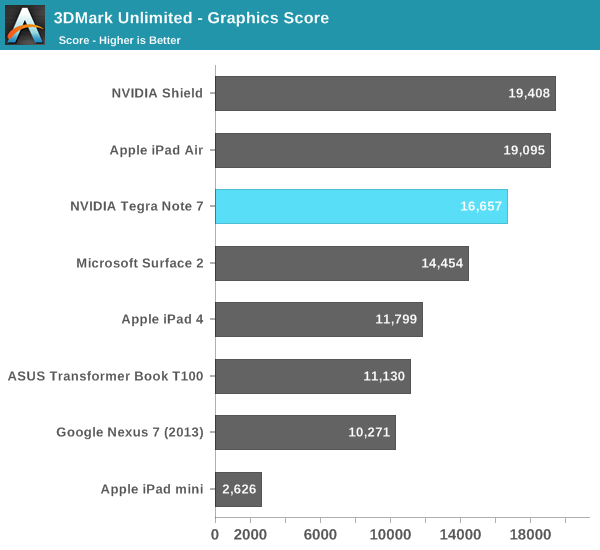
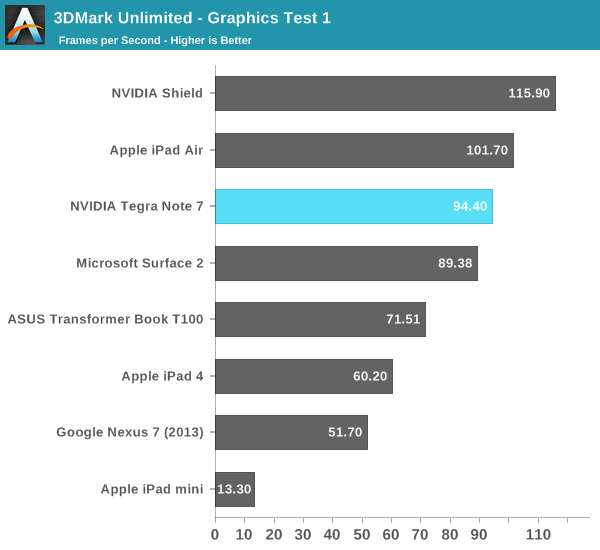
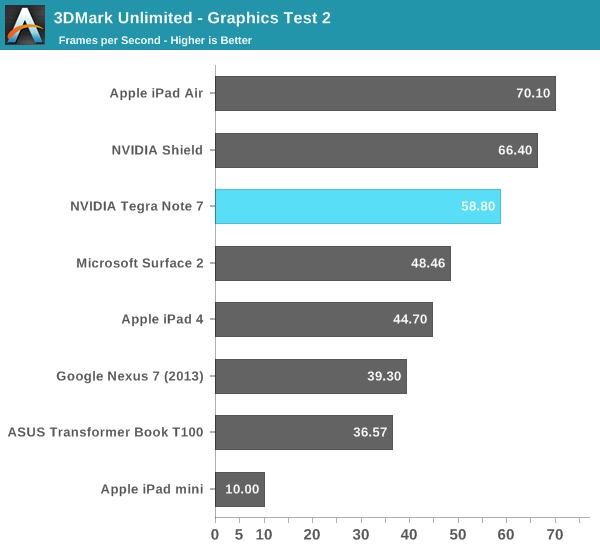
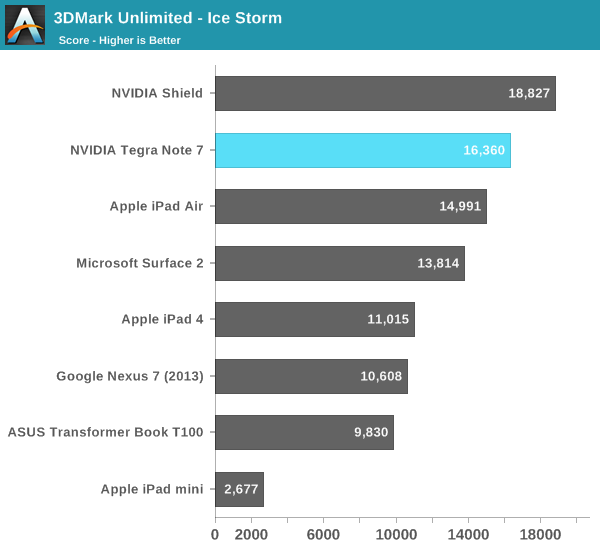
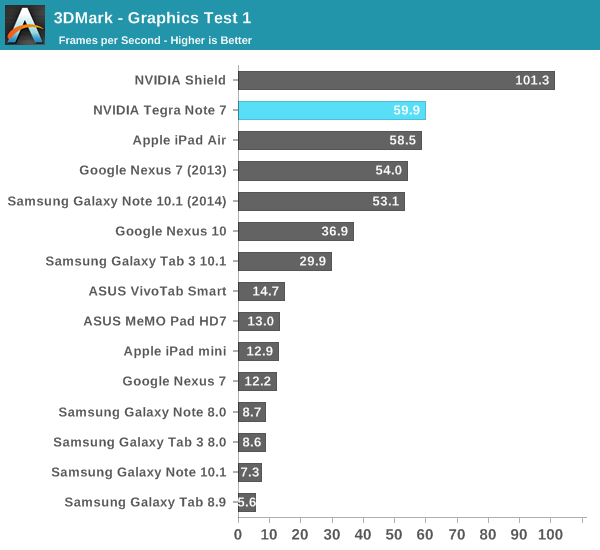
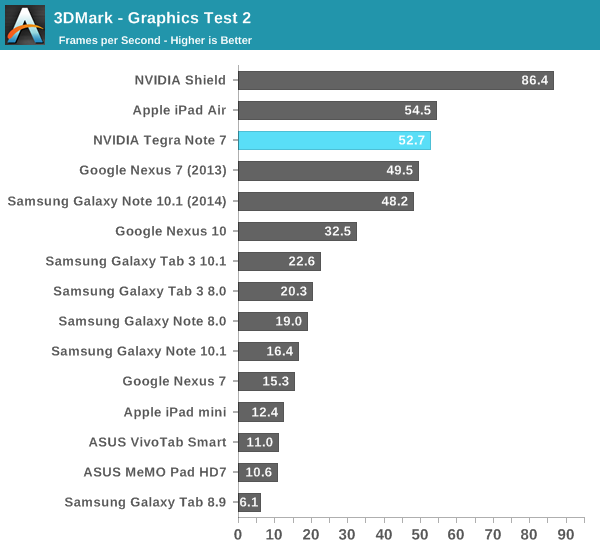
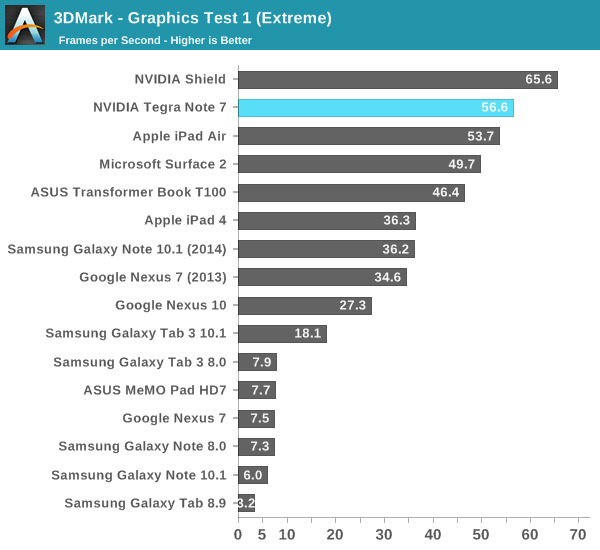
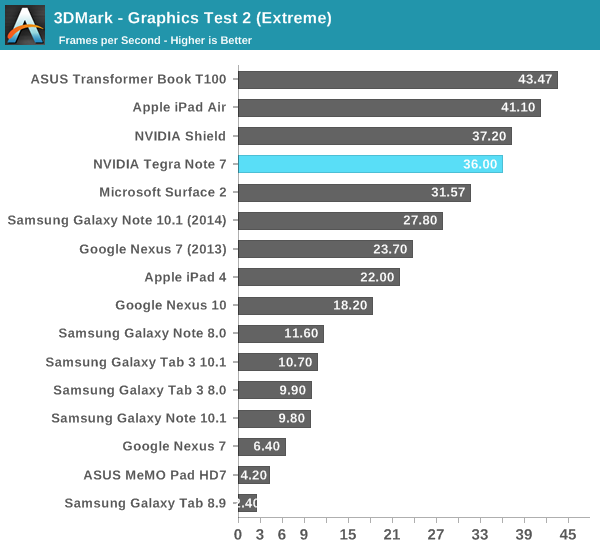
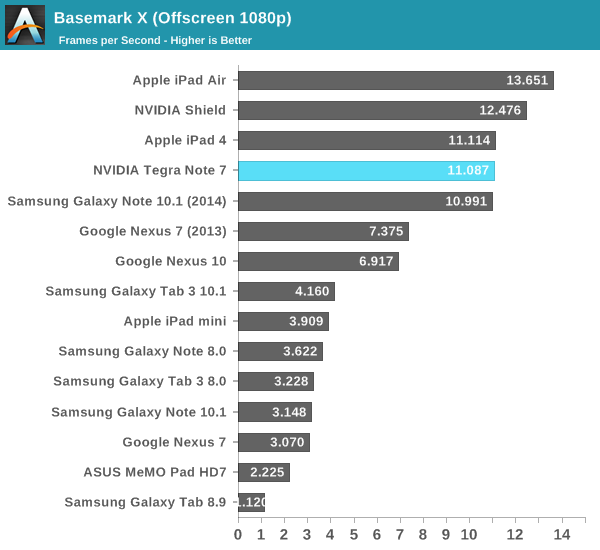
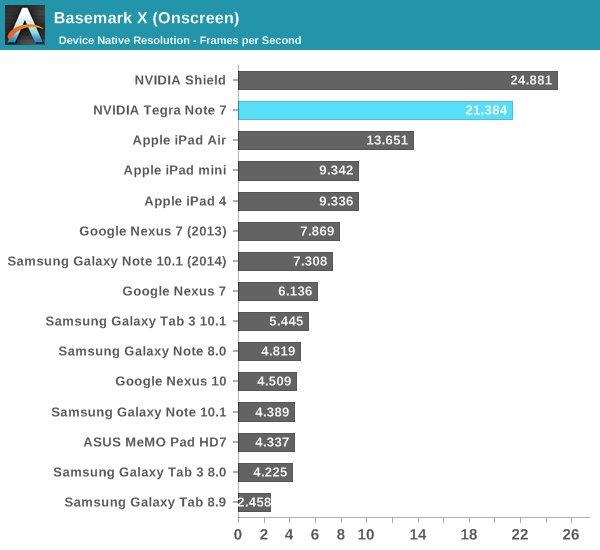
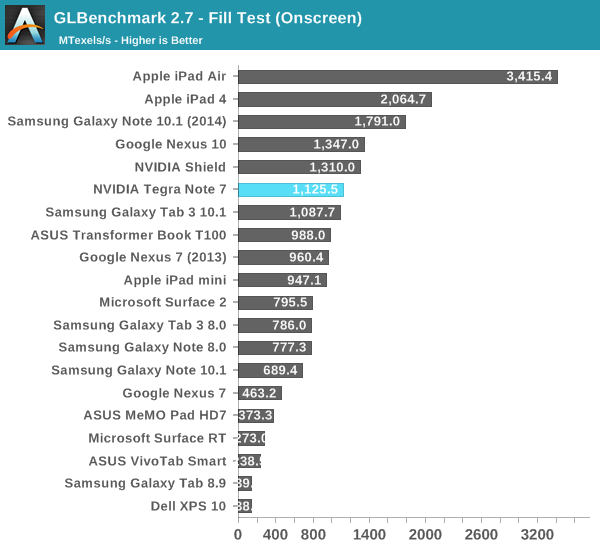


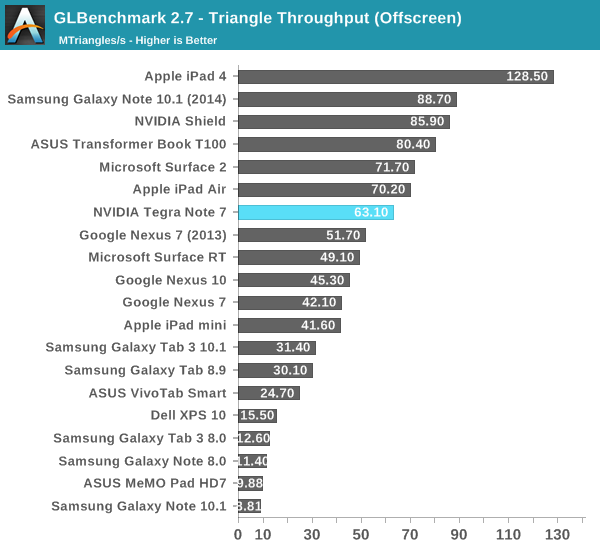
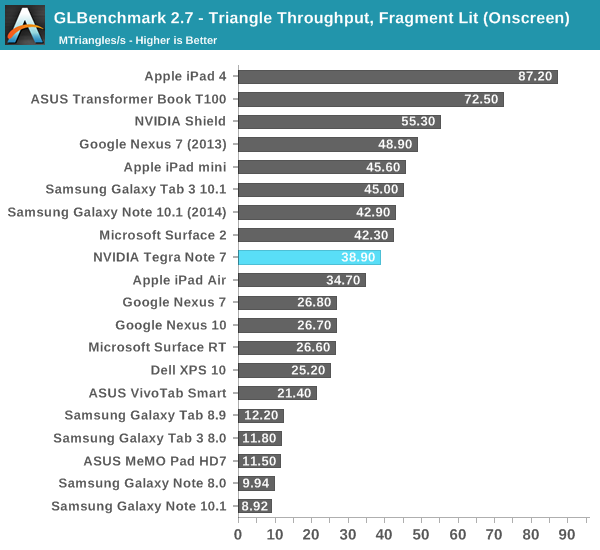
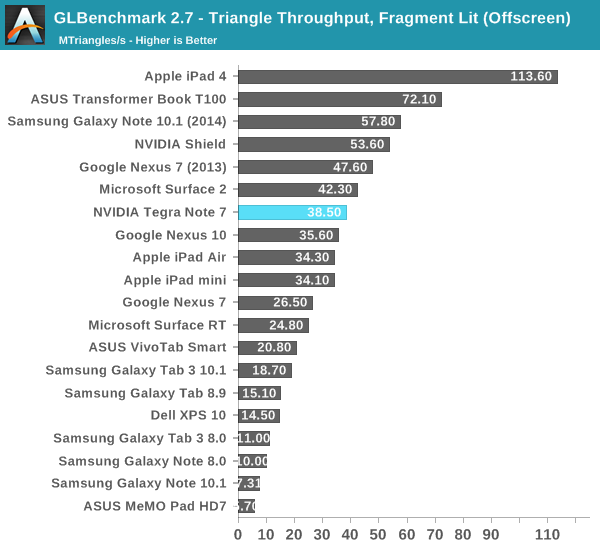
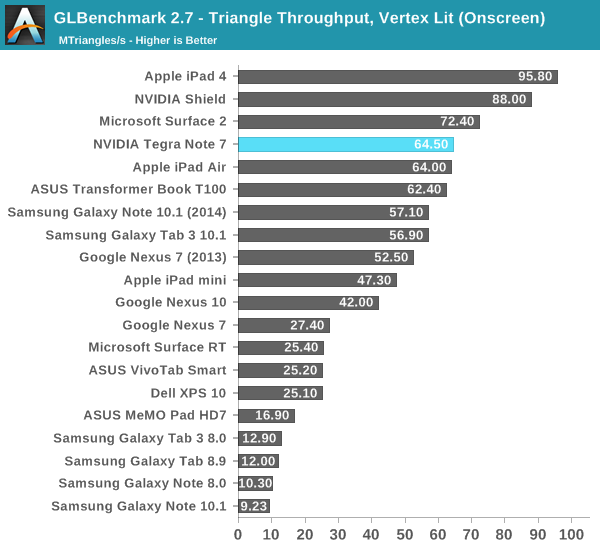
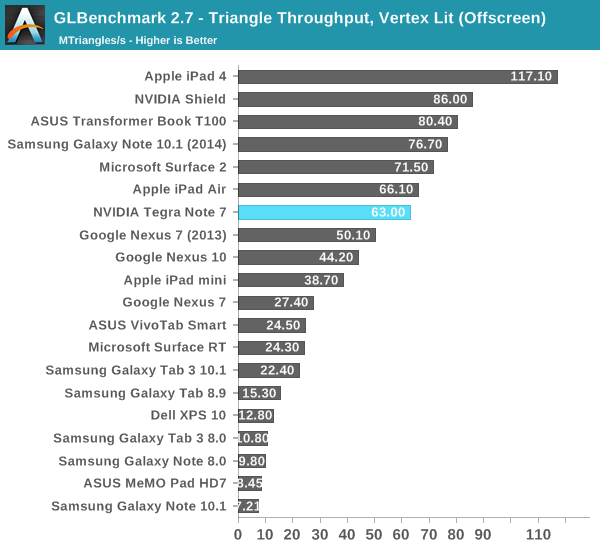

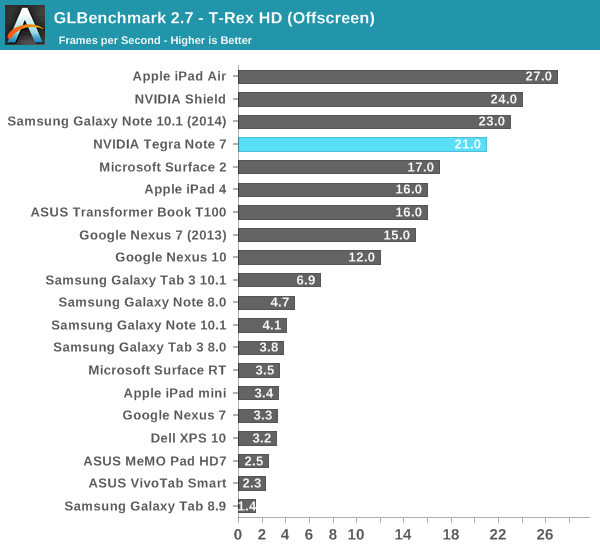
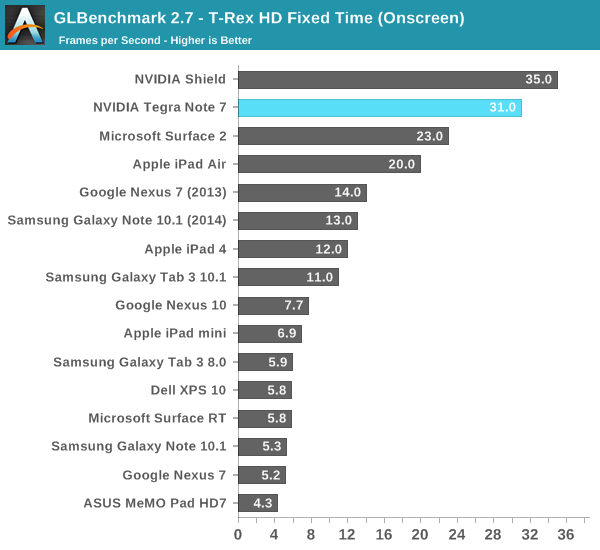
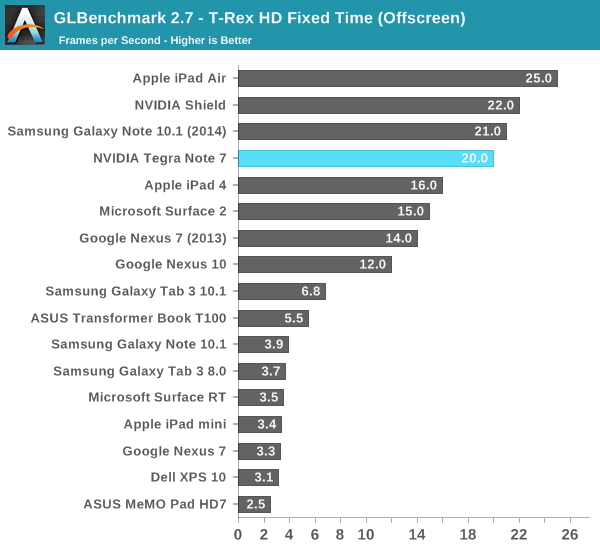
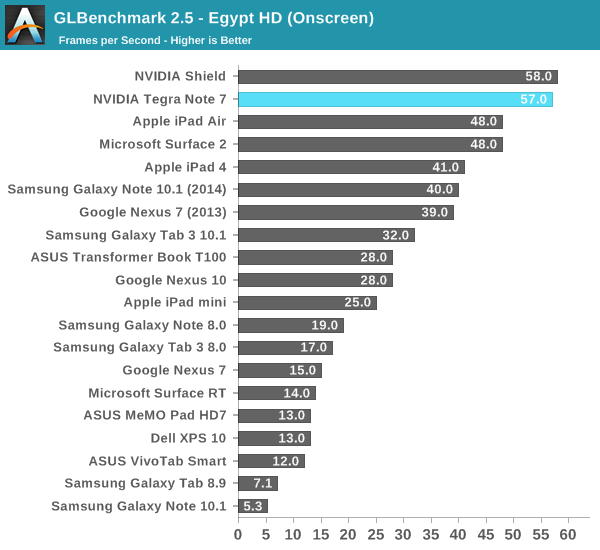
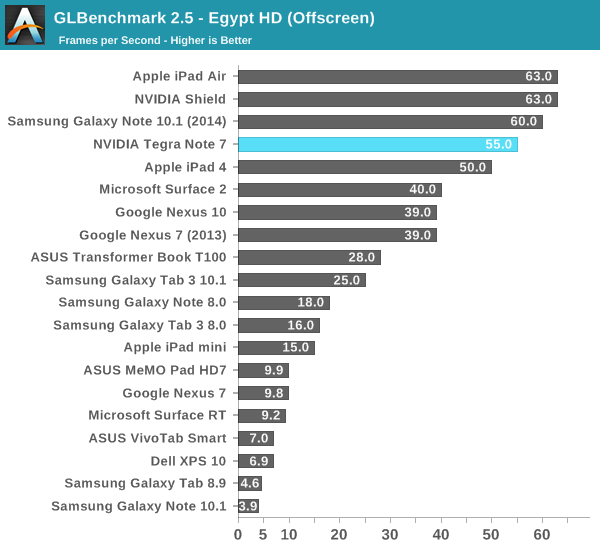
Mostly we see the roughly 10 percent GPU performance delta fleshed out in the compute bound tests. There are a few outliers however, like the 3DMark on-screen tests which can go over 60 FPS on Shield but can’t on Tegra Tab, even in “maximize performance” mode which purports to rescind the app FPS limitation. In the offscreen tests however we see essentially what we’d expect. Tegra 40S obviously does very well compared compared to the Adreno 320 inside APQ8064 in the Nexus 7 (2013) as well. Coupled with a 1280x800 display resolution, I don’t think Tegra Tab is want for more GPU performance at all, it might even be overkill at that resolution for the current suite of games.
NAND Performance
Last up is NAND and storage performance. We’ve been tracking storage performance on these devices for a little while now and have noticed forward progress over the generations.
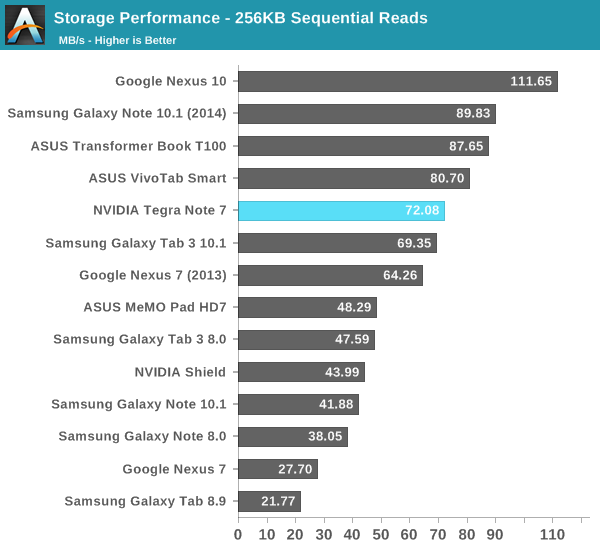

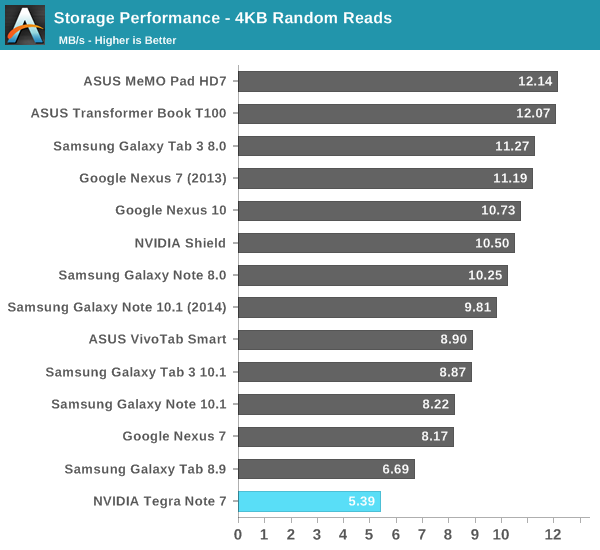
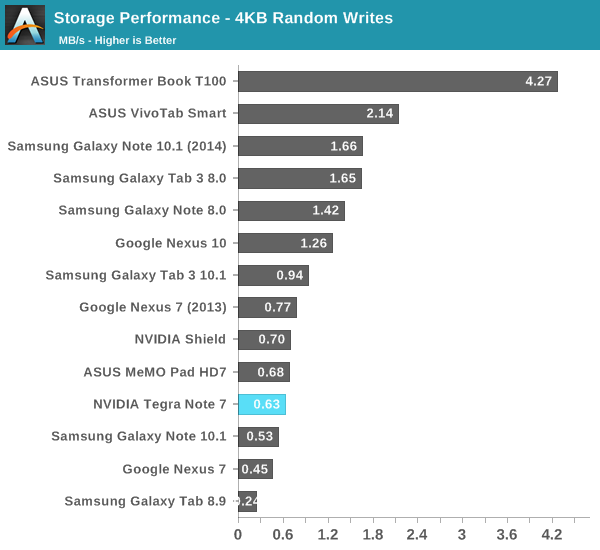
The Tegra Tab starts out strong with relatively fast sequential reads, but then starts falling behind. It’s ahead of the old Nexus 7 in sequential writes, but its random performance suffers. It’s clear that storage performance is one of the areas that took a hit on the Tegra Note. The upside however is that there’s a microSD card in Tegra Note, although SD isn’t exactly going to give an uplift on random read or write speed versus internal storage.


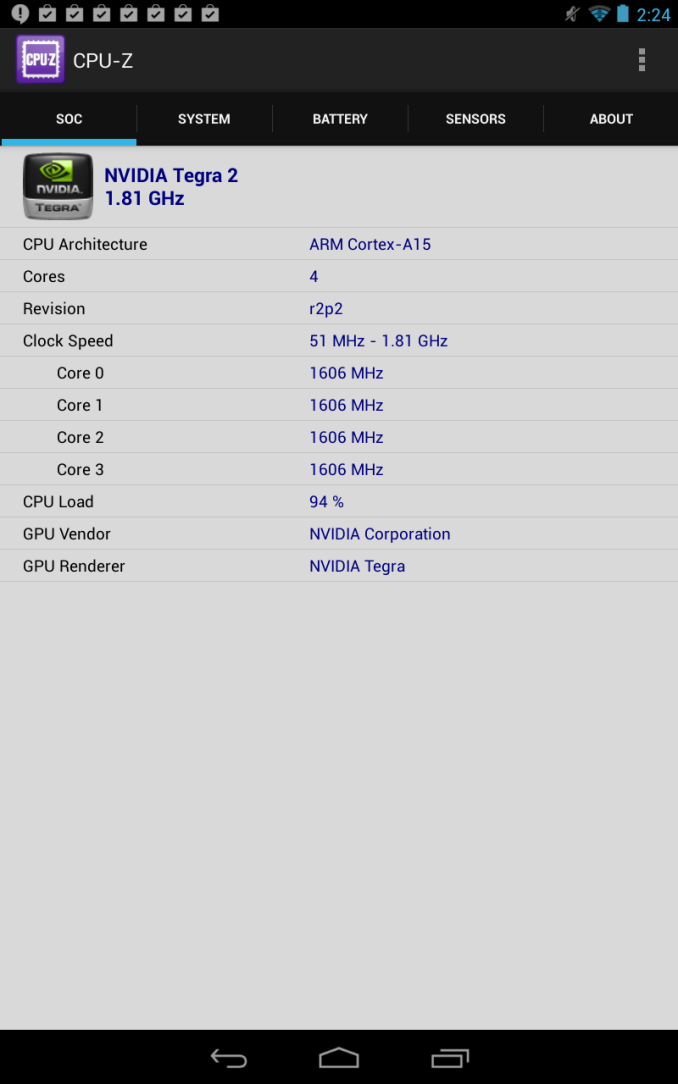
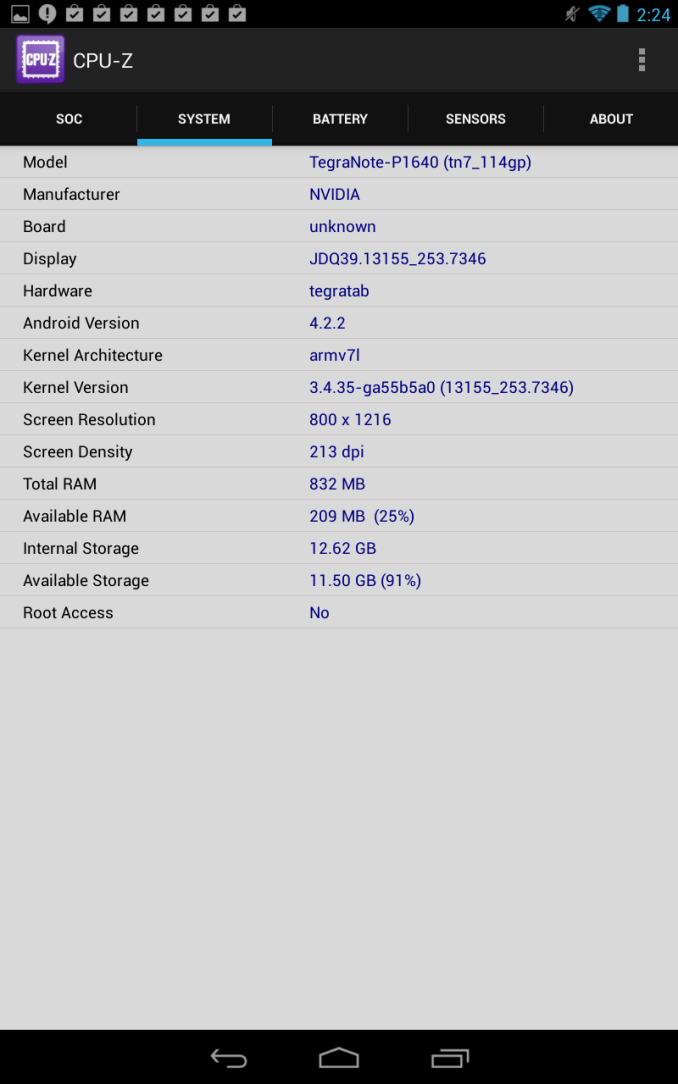
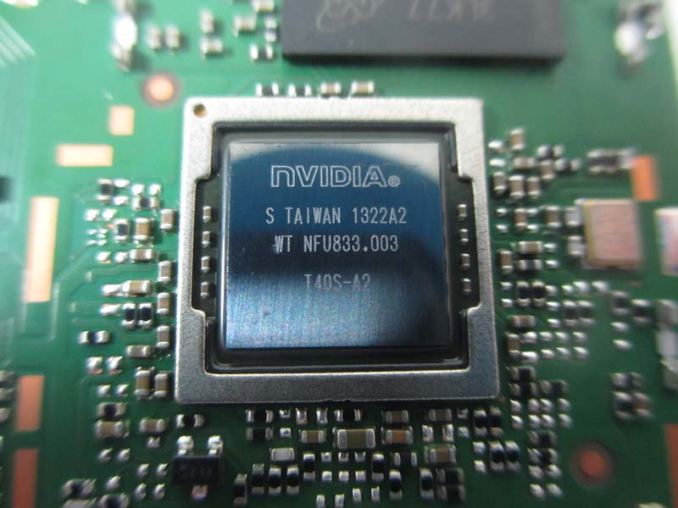








87 Comments
View All Comments
amdwilliam1985 - Tuesday, November 12, 2013 - link
Same here, I was hoping for the Nexus 5 review, from the Hangouts they did last time, it sounds like it should be coming soon, hopefully tomorrow.I'm kind of waiting for "Brian's stamp of approval" before I hit the purchase button for the 32GB Nexus 5.
augiem - Thursday, November 14, 2013 - link
"but everything else is underwhelming, especially the screen."While I think a 1080 screen would be nice, I can certainly see why Nvidia chose to go lower. Look at the on-screen benchmarks like T-Rex. This tab is easily 2x the speed of the 2013 Nexus 7. Nvidia, afterall, has made their living in games for the most part. This is actually a very smart choice for gaming concerns. You're not going to notice much in a game. Desktop/web, sure, but not in most games.
mkumar12345 - Tuesday, November 12, 2013 - link
I find it really hard to believe that someone find noticeable latency in Note 3. That has just not been my experience. It seems to be on par with surface pro 2. Only issue is lack of onenote app with inking capability on Android but Microsoft is the one to blame for that.ddriver - Tuesday, November 12, 2013 - link
There is noticeable latency on the note 3, but pretty much on part with wacom tablets I've used, I've never used a cintiq in order to be able to track the pen and the cursor side by side, so the latency is masked when the tablet is standalone and the result is visualized on another display.That being said, latency is not all that bad, it is good enough for writing and occasional sketching, and hopefully will get better when google finally manage to deliver on their long-overdue promise of reducing android latencies to reasonable levels
Drumsticks - Tuesday, November 12, 2013 - link
Microsoft is to blame for wanting to differentiate their tablets? Google doesn't even share YouTube with windows 8 or WP8 sadly.And android would have multi-window apps if Samsung would share with everyone else. Companies like to differentiate themselves, that's nobody's fault.
ddriver - Tuesday, November 12, 2013 - link
Even though it is a larger form factor and not a phone, I think it should have been also compared to the galaxy note 3, feature and performance wise.Also, maybe the review author should post a scan of his regular handwriting on paper to compare to what he did on the note... Right now I cannot tell whether it is case of terrible handwriting or a device, not particularly good at capturing it.
DigitalFreak - Tuesday, November 12, 2013 - link
I'd rather spend $30 more and get the Nexus 7 2013.JeffFlanagan - Tuesday, November 12, 2013 - link
Same here if I still had use for a 7" tablet, but I haven't touched my Nexus 7 v1 since I got my Galaxy Note 3. Fitting a big-enough 1080p screen in my pants pocket beats a bigger screen that I have to carry. This might change with winter arriving and the switch to a coat with big pockets.Tehk17 - Tuesday, November 12, 2013 - link
Why?BigLan - Tuesday, November 12, 2013 - link
Could you retest the web battery life for the 2013 n7? I've had mine since launch and never been able to get anywhere close to 12 hours - 7 or 8 is more typical, and is what most users at xda report too. I know the display gets calibrated to 200 nits, but anand is the only review I've seen claiming anywhere near that kind of battery life.